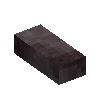Литьё
Литье в основном используется для изготовления металлических инструментов из меди и бронзы, которые выплавляются в жидком состоянии и отливаются в формы или заготовки для создания оголовий инструментов. С помощью этого процесса также могут быть превращены в слитки или сплавы руды из основного металла в слитки.
Обязательные материалы
Чтобы отливать металлические предметы, игрокам нужны тигель, Костёр, топливо (уголь или древесный уголь), глиняные формы, созданные формирование глины и Металлы самородки.
Доступные инструменты для отливки
- Топор: (Сбор урожая) Повреждает блоки древесины, листьев и растений, включая деревья, бревна, доски, заборы, ворота и деревянные строительные элементы. Используется для создания дров.
- Молот: (Крафт) Используется при кузнечном деле и для дробления камней / руд в сетке крафтинга, когда жернова недоступны.
- Мотыга: (Крафт) Используется в сельском хозяйстве для преобразования почвы в грядки.
- Кирка: (Сбор) Повреждает Камень, булыжник и Керамические блоки; используется для добычи камня и руд.
- Геологический молот: (Сбор) Повреждает каменные блоки; используется для обнаружения наличия руд при добыче.
- Лопата: (Сбор урожая) Повреждает блоки местности, включая Почву, Глину, Торф, Песок и Гравий. Используется для сбора блоков местности или терраформирования ландшафта.
- Меч: (Оружие) Наносит урон мобам; используется в качестве боевого оружия ближнего боя
Получение руд
Металлические самородки можно получить промывкой. Маленькие камни, содержащие металлические руды, также появляются на поверхности мира и являются хорошим ранним источником металлических самородков. Чтобы собрать поверхностные отложения, «разбивая» руду, содержащую камни (пустой рукой или любым предметом), чтобы превратить камни в рудные самородки для сбора. Эти поверхностные отложения являются индикатором более крупных подземных рудных месторождений. Обязательно добавьте путевую точку, чтобы отметить местоположение для последующих операций майнинга.
Подготовка руд
Самородки, полученные путем сбора мелких каменных отложений или промывкой, «готовы к использованию» и не требуют дополнительной обработки. Руды, собранные добычей, находятся в виде вкраплений в камне. Куски каменной и металлической руды должны быть помещены в решетку крафта с молотком, чтобы раздробить камень и получить куски самородков. Каждый самородок содержит 5 единиц основного металла.
Smelting Metal
Smelting is performed in a crucible. The crucible will hold four complete stacks of 128 nuggets, but only one material type, base metal or alloy, may be smelted at a time.
Preparing the Crucible
- Place the crucible in the input slot of the firepit to access the crucible GUI.
- Add ore nuggets (5 units each) into the four input slots of the crucible GUI. Ore amounts and types can be chosen based on which metal or alloy is to be created, and how much material is required to fill the selected molds.
- When the correct ingredients for an alloy are added, the GUI displays the amount (metal units) and type of material that will result from the smelting process
- Add fuel, Peat, coal or charcoal and light the firepit. Be sure to select the fuel appropriately, the fuel must raise and maintain the temperature of the metal above the melting point to liquefy the ores within the crucible.
- When the metals are liquefied, the glowing crucible will shift to the firepit output slot.
Adding ores after the process begins resets the temperature.
Casting Metals
Metal ores and alloys with melting points at or below 1300°C can be smelted in a crucible and cast to form metal ingots prior to smithing or tool heads using clay molds. Copper and Bronze Alloys may be cast into tool heads using clay molds.
Tool heads and ingots require 100 metal units (20 ore nuggets) per item
Filling Molds
- Place the ingot or tool head mold to be filled on a solid surface (Sneak + RMB). Tool molds occupy one block, but ingot molds may be placed two to a block.
- Pick up the glowing crucible will appear glowing and will shift to the firepit output slot (GUI: right).
- With the crucible in an active hotbar slot, select the mold with the display crosshairs and use RMB to pour materials into the ingot or tool mold.
- When the mold is filled, no more metal can be added to the mold.
- The metal will cool in the mold, and item temperature can be viewed in the block GUI.
- When the metal is cold, ingots and tool heads can be removed from the molds (RMB).
If a player attempts to pick up a mold before the metal is cool, the liquid material will be lost. A partially filled mold cannot be picked up without losing the material, even after the metal cools.
Alloy Ratios
- Tin bronze, a mixture of copper and tin, has twice the durability of copper.
- Bismuth bronze, a mixture of copper, bismuth, and zinc, has slightly higher durability than tin bronze. In comparison to Tin Bronze, weapons and tools made from bismuth bronze are slightly slower (reduced mining speed) and have reduced attack power (HP).
- Black bronze is a mixture of copper, gold, and silver. It has the highest durability of all bronze alloys.
Tutorial Video: Casting
| {{{title}}} | |
|---|---|





